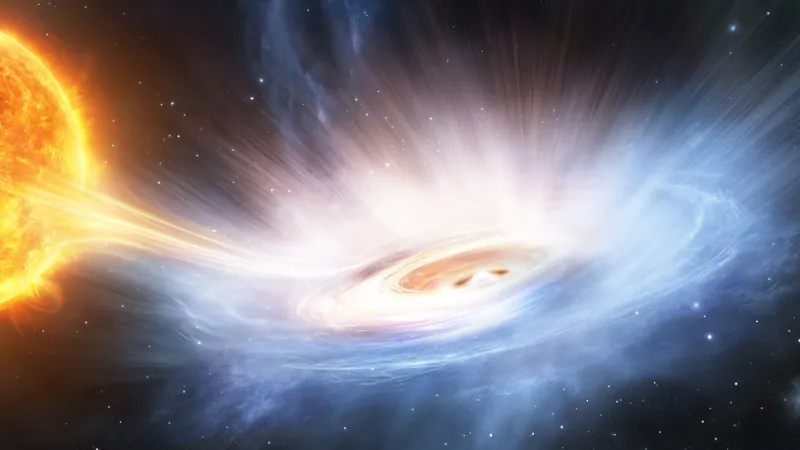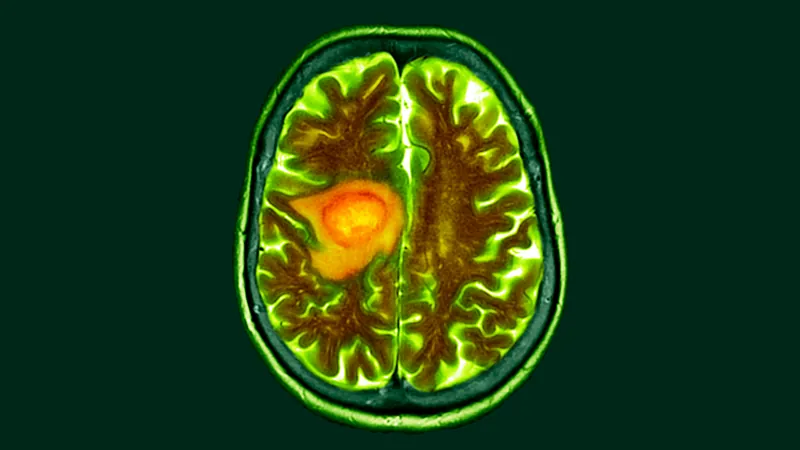
Unveiling the Secrets of the Cosmos: How a Neutron Star's Winds Could Transform Our Understanding of Black Holes!
2025-09-18
Author: Ming
A Game-Changer in Cosmic Research!
Astronomers have made a groundbreaking discovery using the XRISM spacecraft, revealing astonishing winds emanating from a neutron star. This revelation could shift paradigms in physics and astronomy!
Unexpected Discoveries in Cosmic Winds
The research team uncovered intriguing differences between the energetic winds produced by accretion disks surrounding neutron stars and those associated with supermassive black holes at the centers of large galaxies. These insights could provide critical information about how matter flows into these celestial giants and how the winds affect their galactic environments.
The Power of XRISM
Upon observing the accretion disk GX13+1 — located between 23,000 and 26,000 light-years away in the Milky Way — the team harnessed the advanced capabilities of XRISM’s Resolve instrument. This powerful tool allowed them to analyze the intricate details of the neutron star like never before. "When we first analyzed the data, it felt like witnessing a dream realized after decades of work," exclaimed Matteo Guainazzi, an ESA XRISM project scientist.
Cosmic Winds: More Than Just a Breeze
While it may seem peculiar to study winds from a neutron star to understand black holes, the mechanisms behind these different types of cosmic winds are likely interconnected. Since our nearest supermassive black hole, Sagittarius A* (Sgr A*), isn’t actively feeding, GX13+1 serves as a prime candidate for this captivating research.
Surprises in Energy and Speed
Initially, GX13+1 startled researchers by brightening significantly, suggesting it may have breached the theoretical Eddington limit — a threshold for how much matter can be accreted. When the neutron star crossed this limit, massive winds were expelled. Team leader Chris Done noted, "The intensity surged dramatically, producing the densest wind we’d ever observed!" Yet, surprisingly, this wind traveled at a 'mere' 620,000 mph, much slower than anticipated.
Understanding the Mysteries of Cosmic Winds
The density of GX13+1's wind contrasted sharply with that of supermassive black holes, which produce winds that are clumpier and faster. Researchers speculate that variations in temperature between the accretion disks of neutron stars and those of black holes may explain these differences. The larger accretion disks around black holes emit ultraviolet light, which interacts with matter more effectively compared to the X-ray emissions from neutron stars.
A New Era in Cosmic Understanding?
This pioneering research holds the potential to revolutionize our comprehension of radiation and matter interactions around the universe's most extreme objects, influencing galaxy evolution in profound ways. Moreover, findings from this study could inform the development of future telescopes, including ESA’s NewAthena mission, set to launch in 2037 and anticipated to be the largest X-ray observatory ever constructed.
As Camille Diez from ESA aptly stated, "The unprecedented resolution of XRISM opens doors to exploring these cosmic phenomena in greater detail, paving the way for next-generation telescopes!" The cosmos has much to reveal, and we’re only just beginning to scratch the surface.



 Brasil (PT)
Brasil (PT)
 Canada (EN)
Canada (EN)
 Chile (ES)
Chile (ES)
 Česko (CS)
Česko (CS)
 대한민국 (KO)
대한민국 (KO)
 España (ES)
España (ES)
 France (FR)
France (FR)
 Hong Kong (EN)
Hong Kong (EN)
 Italia (IT)
Italia (IT)
 日本 (JA)
日本 (JA)
 Magyarország (HU)
Magyarország (HU)
 Norge (NO)
Norge (NO)
 Polska (PL)
Polska (PL)
 Schweiz (DE)
Schweiz (DE)
 Singapore (EN)
Singapore (EN)
 Sverige (SV)
Sverige (SV)
 Suomi (FI)
Suomi (FI)
 Türkiye (TR)
Türkiye (TR)
 الإمارات العربية المتحدة (AR)
الإمارات العربية المتحدة (AR)